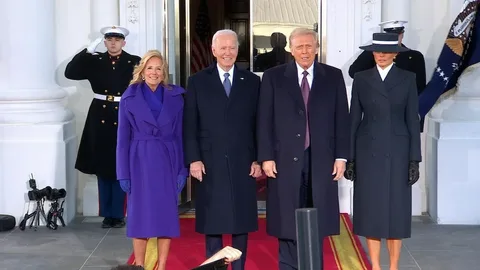Introduction
The political climate in America in 2025 is multifaceted, characterized by new adjustments and judgments. From legislative priorities to leadership strategies, unlocking the key themes of the year will be vital to making sense of the country’s trajectory.
A New Congress Carries Different Priorities and Difficulties
The 118th Congress introduced new faces and a renewed emphasis on pressing matters. In 2025, the legislative branch will confront the wave of the growing economic issues, such as the control of the inflation and the increase of the jobs. Partisan divides dug in, but bipartisan initiatives on infrastructure funding and health care reform have offered glimmers of hope.
Skeptics are worried about the inflation-fighting package or revenue-enhancing policies. Lawmakers on both sides are feeling pressure to demonstrate fiscal responsibility while also funding essential programs like Medicare and Social Security. In addition, the need for student loan reforms and housing affordability have risen on the priority list in the face of strong public demand.
Presidential Agenda: Leadership During Uncertainty
The agenda for the sitting president in 2025 should continue to address both national and international concerns. Climate change remains front and center in policy discussions, with the administration seeking to establish aggressive goals for renewable energy development and carbon emissions reductions.
On the world stage, foreign policy has remained in the center with NATO allies and responding to tensions in Asia. While the numbers have eased, actions to address cyber threats and global supply chain vulnerabilities are still of critical importance.
Political Polarization: Seeking Common Ground
Political polarization remains a defining feature of much of the discourse in Washington, D.C. Cultural issues, like reproductive rights and gun control, are still fundamentally polarizing. In spite of these tensions, there have been efforts to encourage dialogue on less divisive matters, such as veterans’ affairs and public health crises.
State-level efforts are also making a splash. A slew of its states are advancing bold policies on health care expansion, education reform and climate resilience. These state actions also emphasize the increasing importance of local governance in determining national trends.
Decisions in the Supreme Court: the future of a nation
On the Supreme Court’s agenda for 2025 are a few cases that could reshape legal terrain on affirmative action, digital privacy, and election laws. Each decision will have long-term consequences for policy and everyday life in America.
As the country’s highest court wrestles with these cases, its role as arbiter of our values became even more apparent. Faith in the judiciary is a hot topic, as debates consider court reform and lifetime appointments that still hoist chatter.
Elections and Campaigning: Laying the Groundwork for 2026
And while 2025 isn’t a federal election year, organizing for the 2026 midterms is well underway. Political parties are honing their plans, zeroing in on voter engagement and appealing to influential groups like younger voters and suburban areas.
Eleventh, campaign financing is always as a sore thumb, and there will be some demands for more transparency and regulation in this area. At the same time, technology’s involvement in elections is under scrutiny, especially when it comes to misinformation and data security.
The Double-Edged Sword
The year 2025 is characterized by a governance landscape transformed by technological initiatives, changes, and opportunities. Artificial Intelligence plays an increasingly prominent role in public services, from the acceleration of administrative processes to the optimization of disaster response capabilities.
Nonetheless, anxiety around data privacy and the moral consequences of AI adoption are raising intense discussions. Policymakers must contend with the difficult trade-offs between innovation and the protection of civil liberties.
Numerous Broker No Bueno Broker No Buenos: Biden Can’t Do It Alone
Since 2023, the U.S. government has ramped up initiatives to address climate change, increasing funding for green energy projects and tightening regulations that impact industries responsible for pollution. Efforts to support community-level programs, like urban greening and water conservation initiatives, are also getting more federal support.
Yet, events such as extreme weather and water shortages serve as reminders that the need for enduring efforts in this area is urgent. Public – Private Partnerships is turning out to be one of the major strategies to create an impact.
FAQs
What are the main political challenges in the U.S. in 2025?
The primary challenges include economic recovery, climate change policies, addressing political polarization, and navigating international tensions.
What are some key legislative priorities for 2025?
Legislative priorities include inflation control, job growth, student loan reforms, housing affordability, and funding Medicare and Social Security.
How is technology affecting governance in 2025?
Technology, especially AI, is transforming public services but also raising concerns about data privacy and ethical implications.
What role does the Supreme Court play in 2025?
The Supreme Court is addressing landmark cases on affirmative action, digital privacy, and election laws, shaping legal and societal landscapes.
What climate actions is the U.S. taking in 2025?
The government is focusing on renewable energy projects, stricter pollution regulations, and community-level initiatives for urban greening and water conservation.

